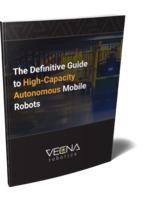ESI Proves their Investment in AutoPLANT Payed Off
Power generation is a hot topic, especially with Obama's push for clean energy. With that said, the designing of power facilities is more important now than ever with these changes in priority for the power industry. For example, replacing old coal plants with cleaner power productions, focusing on the Smart Grid, and giving alternative energy power the attention it deserves are all coming into the forefront of the power generation discussion. Bentley and ESI teamed up to shed light on the power generation design community, in a recently presented webcast, "How ESI Helps Improve Return on Investment by Designing Biomass Cogeneration Plants in 3D."
The webcast detailed ESI's use of AutoPLANT and other Bentley products on the almost completed U.S. Department of Energy's Biomass Cogeneration Project. To begin with, Mitch Hayes, ESI's Director of Sales, explained ESI's po sition in the power industry, which is a design, build and engineering firm that specializes in the power industry and prides itself on providing clients with innovative, cost-effective and eco-conscious solutions. "We don't do anything else. We don't build bridges or shopping malls. We do power plants and have been doing it for thirty years," said Hayes.
All of the engineering is done in-house with a complete team of design-build engineers working with fuel production plants ranging from biomass, natural gas and fuel oil, and paper mill sludge, to coal and other plant opportunity fuels except nuclear and hydro. Their engineering group is divided into three departments: architectural, civil and structure; mechanical, piping HVAC and fire protection; and electrical, instrumentation and control. "Our design and engineering approach is we like to do EPC projects from soup to nuts. We start with the original site consulting surveys and environmental permits, and go all the way through the architectural, civil, and structural. (And then continue) with the mechanical, the instrument controls, and the electrical. We like to construct these projects using our own construction management services and then start them up with our own engineers. It gives us a good feeling of when we're designing the project, how it's going to operate," said Hayes.
The Biomass Cogeneration Project, located in Aiken, South Carolina, is about 90 percent constructed and should be operating this summer. The goal was to replace existing old, coal and heavy oil fired boilers with multiple, new biomass fired boilers. When operational, the plant will deliver 20 MW/hr of electricity to the grid and supplement the Savannah River Nuclear site. Other specific goals include reducing the DOE's carbon footprint, reducing the fuel consumption by replacing the old system and making the power plant more efficient, and increasing the reliability of the plant due to the antiquated coal and heavy oil fired boilers.
Regarding the engineering success criteria, "as far as we were concerned the engineering success criteria was to integrate these technologies that we were buying from manufacturers all over the world, and integrate them into one successful package." To explain, ESI was buying out all the equipment at the point of manufacture like pumps, fans and heat exchangers in the stack.
And environmentally speaking, the plant will support ESI's emissions goals of reducing 100,000 tons of greenhouse gases per year and it will prevent 1.4 billion fewer gallons per year of water removed from the Savannah River, according to ESI.
The efficiency and reliability goals were achieved with a predicted 11 percent efficiency increase through combustion, turbine and heater cycle improvements. Impressively, the plant will generate approximately $35 million in savings a year thanks to energy, operations, fuel and maintenance savings.
All of this was achieved with a combination of Bentley packages and AutoCAD to produce the 3D production models. For five years, ESI has been using combinations of Bentley products and AutoCAD and they continually add more products every year. Currently they use the following:
-Bentley AutoPLANT V8i for pipe routing, isometric generation and stress analysis;
-Bentley Autopipe V8i for pipe stress analysis;
-Bentley Equipment V8i for equipment modeling;
-P & ID V8i for plant schematics for automatic report generation;
-Bentley Data Manger for database management to maneuver information from one Bentley product to another;
-Bentley Vision V8i to access the database;
-Pro-Steel V8i for 3D steel modeling;
- and Staad Pro V8i for structural steel analysis.
"The benefit for us using these integrated Bentley modules is on this particular project, we detected over 20 major clashes from the initial design, it reduced our drafting hours for generating isometrics, it enabled the constructor to see snap shots of the equipment direction and piping orthographics, our Bill of Materials were much more accurate, our assembly planning was optimized, and we got a chance to look at the equipment access from an operations and maintenance standpoint, which really made the DOE happy when they could bring their operators in and could see exactly how the system was going to work," said Hayes.
Overall, ESI felt like their productivity increased with the use of Bentley products, enabling them to offer the DOE the lowest cost solution for their project. It supported their methodology and goal of "reaching the minimum asymptote where the total project costs, engineering plus construction, equals the minimum amount, and the Bentley products help us get there with maximum efficiency," concluded Hayes.
Demetrius Franklin, CAD manager at ESI, discussed how the project goals were met and the benefits of modeling in a 3D environment. To prove this, he showed the limitations of 2D. He noted that in a 2D environment, with the site plan, it can be very confusing to deal with 20 site plans that have things like the boiler island, the water treatment area, the turbine hall, the cooling tower, and the biomass stacker reclaimer. However, within one 3D site plan, you can clearly identify all of these things and the size, scale and scope can be seen. With one 3D snapshot, "it depicts what you get from 20 plans or sections... you're getting the information a lot quicker and your discussions are faster because you don't have to spend yo ur time in meetings," said Franklin.
Also, he discussed the element of design and project review. In the 2D environment this requires you to print out hundreds of drawings, pull people out of their jobs, and spend weeks to review the documents. But in a 3D environment, this issue can be made easier with interactive features of 3D. "Instead of printing out a bunch of documents in your production meeting, and only marking up one to two percent, in the 3D modeling environment, you don't' have to do that," said Franklin.
Franklin also touched on the misconception of CAD managers being nervous to switch to 3D because they think they have to eliminate the 2D completely. "That's not true at all. If in Bentley AutoPLANT your deliverables call for 2D documents, you can extract that from your 3D environment" because of a feature in AutoPLANT, said Franklin. Additionally, Franklin noted that the Bill of Mate rials List is created so easily in AutoPLANT because it is made automatically.
Franklin then discussed the specific positives of AutoPLANT. First, there are cost savings when using 2D CAD versus Bentley AutoPLANT because AutoPLANT can offer a 90 percent cost savings since it automates many of the otherwise manual, time intensive procedures of a project, according to Franklin. (See image below.) Also, for the contractor, they can save a lot of time with AutoPLANT because they have the ability to speed up the assembly by using snap shots in the model and use the model to create their own piping drawings. One picture can depict what several drawings would otherwise communicate. "If you decide to move into a 3D environment, AutoPLANT is the Cadillac of choices," said Franklin.
Franklin also gave advice on the risks and challenges of switching to AutoPlant, which for the engineer, includes a training budget, a hardware and software budget, the necessity for revised workflow and CAD standards, and prodcutivtiy loss from customization and implementation. From his experience, Franklin suggested to have the CAD manager trained first, and then having them train the team. For the client and the contractor, challenges include the possibility of having the client and contractor have to purchase 3D hardware and software to keep up with the engineer's 3D programs. But Franklin noted that in his experience the client and contractor can view the project information through free 3D viewers.
Franklin did a good job at taking the conversation away from just discussing the cost comparisons of 2D and 3D, to show how there are also time savings that often times are left out of the compariso n conversation.
It is clear that ESI provided the DOE with an on-time project that met their needs, and stayed in line with ESI's company philosophies. By using 3D modeling in AutoPlant, the ESI team delivered a smoother and more productive project that not only saves the DOE money but creates a more sustainable power source for years to come.
By Lauren Browne, ConnectPress Editor




